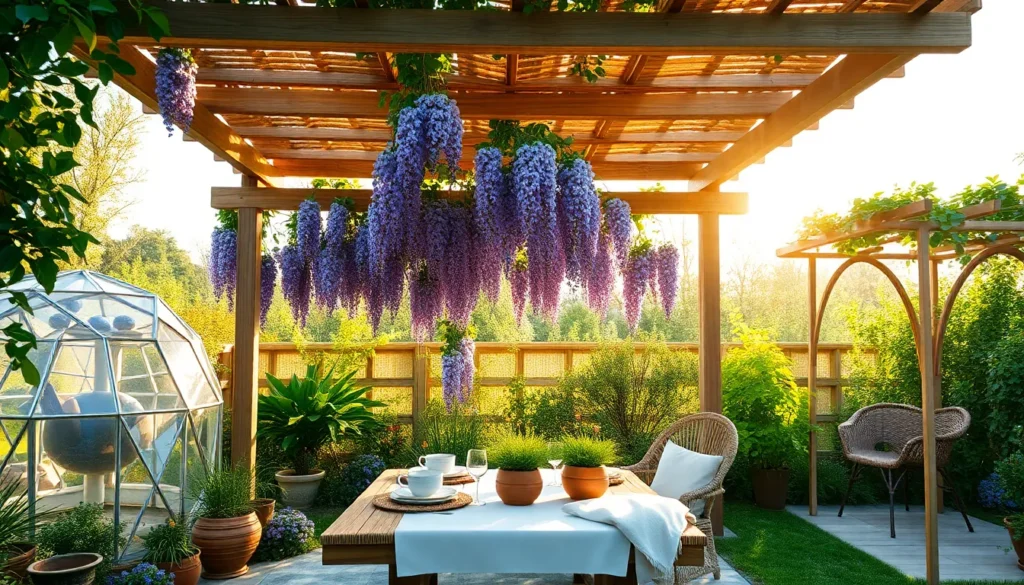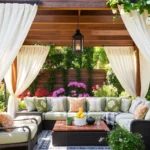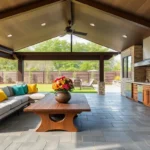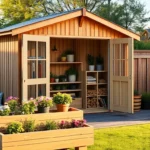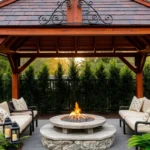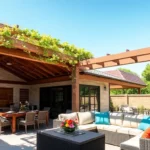Imagine transforming your garden into a stunning retreat where every moment spent under the open sky feels like a luxurious escape. Whether you’re just starting to explore the possibilities of outdoor living or you’re a seasoned pro, our guide, “12 Creative Canopy Design Ideas for Your Garden,” is packed with inspiration and practical tips that will make your outdoor space the envy of the neighborhood.
With these innovative canopy designs, you’ll not only enhance the beauty and functionality of your garden but also create a welcoming haven that invites relaxation and joy. From cozy nooks for quiet contemplation to vibrant spaces for entertaining, each idea is thoughtfully crafted to boost your confidence and empower you to turn your garden dreams into reality. Let’s embark on this exciting journey to elevate your outdoor living experience!
Incorporate Living Plant Canopies
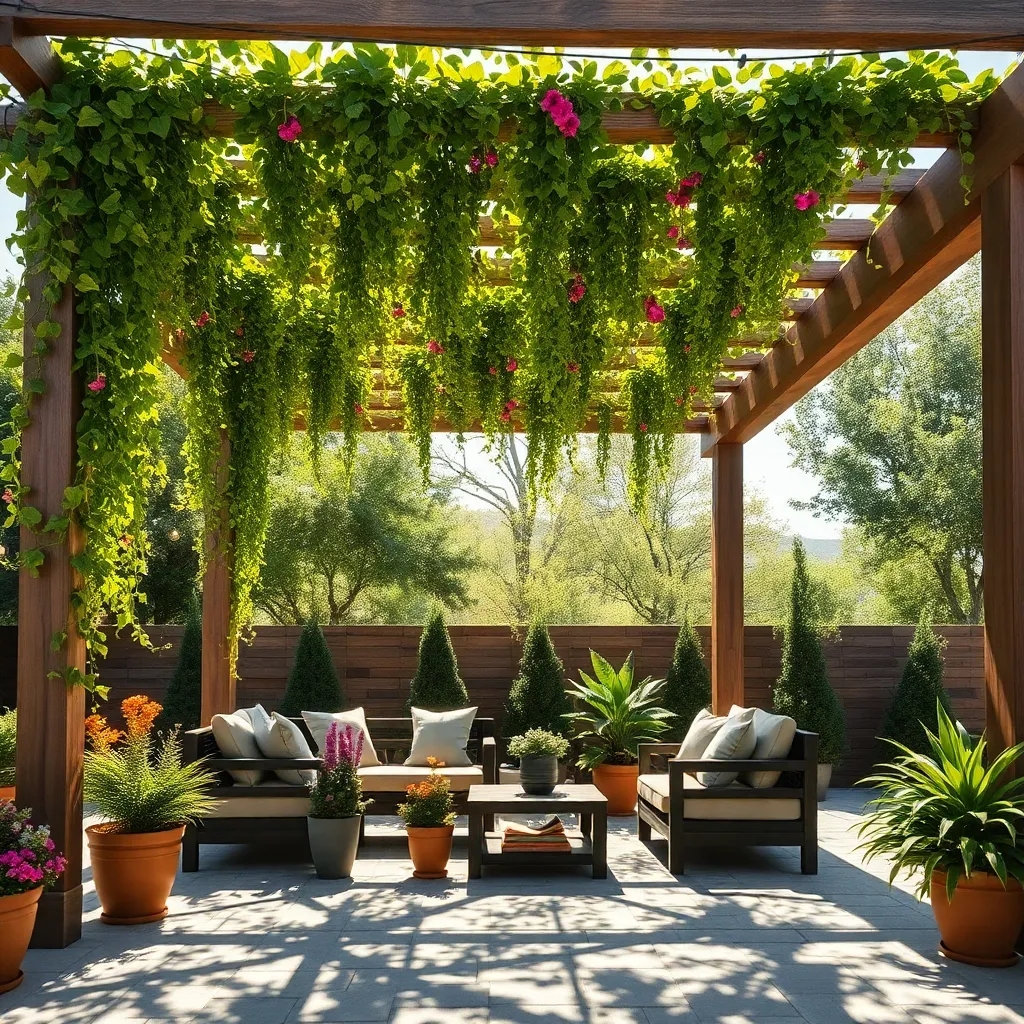
Transform your garden into a tranquil retreat by incorporating a living plant canopy. Select robust climbing plants like wisteria or grapevines, which can thrive in diverse climates and provide lush, natural coverage. Begin with a sturdy framework using materials like wooden beams or metal trellises, ensuring the structure can support the plant’s weight as it grows and matures.
For a more advanced setup, consider using a combination of fast-growing vines for rapid coverage and slower-growing varieties for long-term texture and interest. Position your framework in areas that maximize sunlight exposure and ensure the plants have adequate soil space to establish roots. Regular pruning and maintenance are essential to guide the growth and shape of your canopy, creating a sanctuary that seamlessly blends with nature.
Utilize Reclaimed Wood Structures
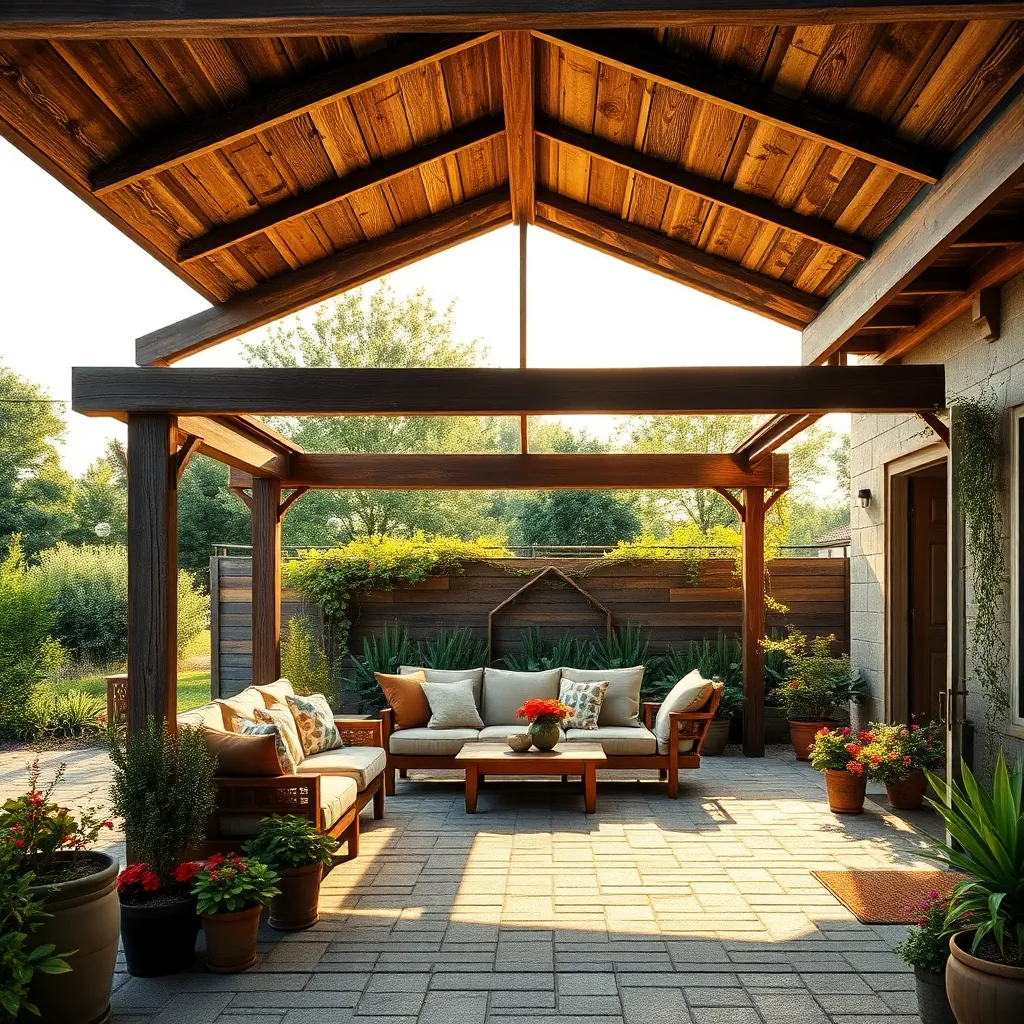
Reclaimed wood can transform your garden into a charming retreat while being environmentally friendly. Start by sourcing wood from old barns, pallets, or even discarded furniture. This material is not only sustainable but also adds a rustic, weathered charm to your outdoor space. Ensure the wood is treated and weatherproofed to withstand the elements, which will help extend the life of your structure.
For a simple yet effective design, consider constructing a pergola using reclaimed beams and planks. Secure the structure with concrete footings to ensure stability, and use galvanized screws for durability. Beginners may opt for a basic rectangular frame, while those more experienced can experiment with angled or curved designs to add visual interest.
- Use a clear sealant to protect the wood’s natural beauty.
- Consider adding climbing plants or fairy lights for an enchanting effect.
Install Retractable Shade Systems
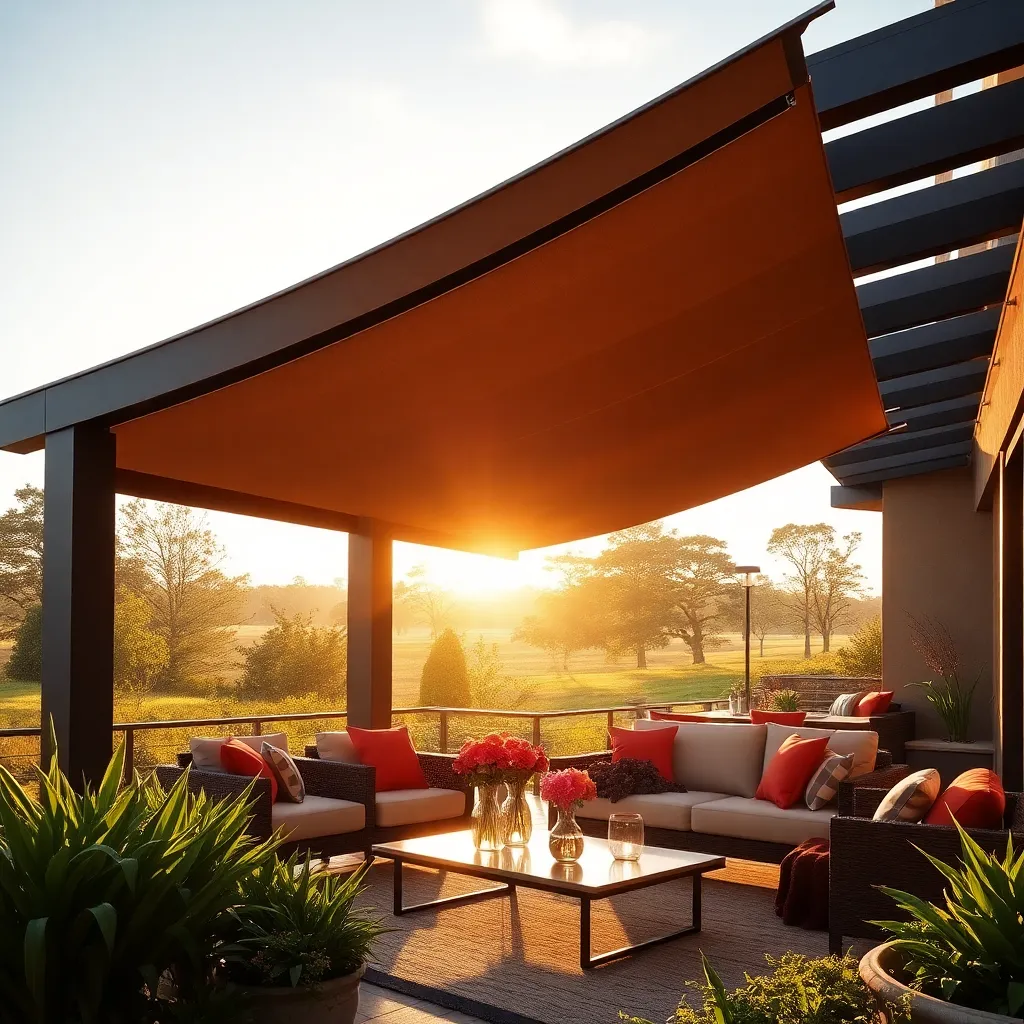
For a versatile and stylish addition to your garden, consider installing a retractable shade system. These systems offer the flexibility to control the amount of sunlight and shade, making them perfect for both sunny and overcast days. When selecting a system, opt for durable materials such as UV-resistant fabric or powder-coated aluminum frames to ensure longevity. Beginners might want to start with a simple manual system, which is easier to install, while more experienced DIYers could explore motorized options for added convenience.
Installation is generally straightforward, but it’s important to measure your space accurately to ensure a perfect fit. Consider attaching the system to a sturdy structure like a pergola or the side of your house for maximum stability. For those looking to customize, many retractable systems allow for the addition of side panels or weather-resistant curtains, offering further protection from the elements. Advanced users might explore smart home integrations, allowing the shade to adjust automatically based on weather conditions. A well-chosen retractable shade system not only enhances your garden’s functionality but also adds a touch of elegance and modernity.
Create Multi-Level Canopy Layers
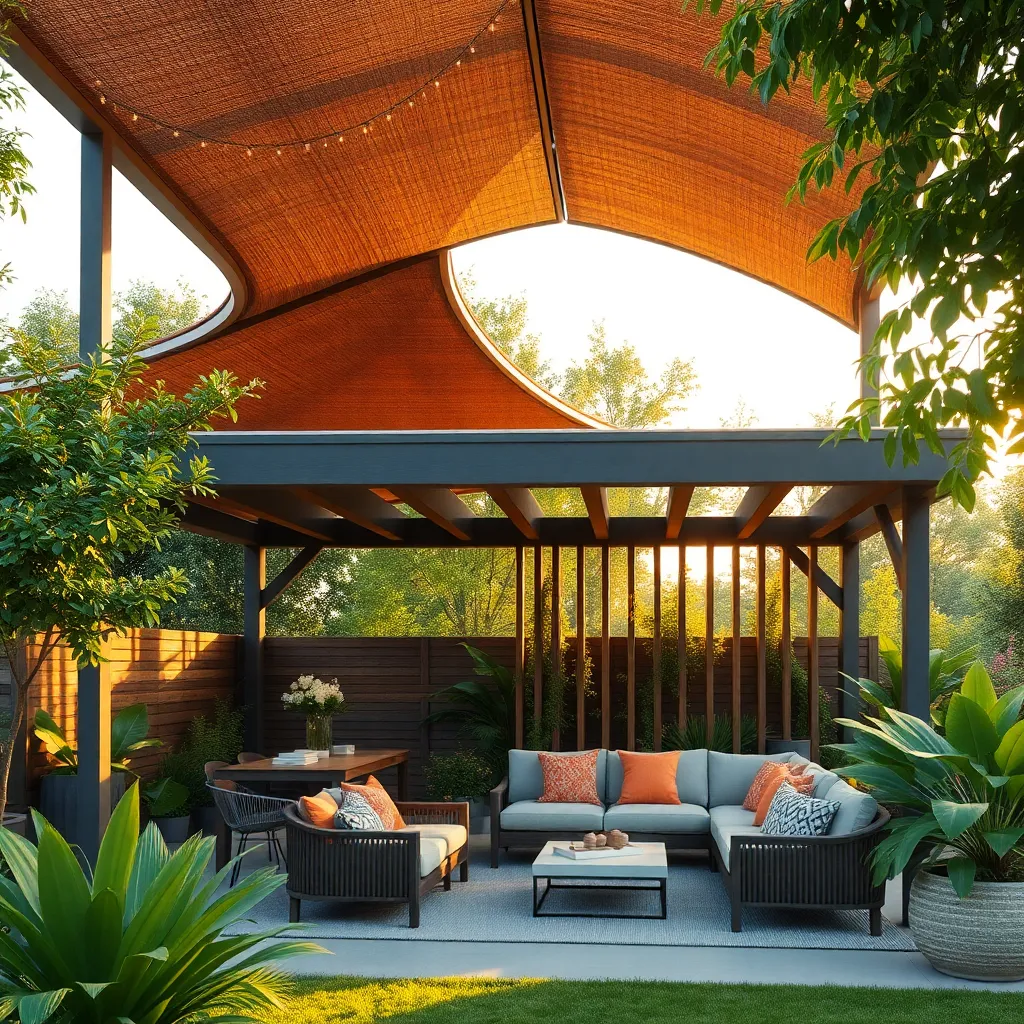
Creating multi-level canopy layers in your garden can provide a dynamic, aesthetically pleasing, and functional outdoor space. Start with a basic layer by installing a pergola using treated wood or metal for durability. This acts as your primary canopy, offering partial shade while allowing sunlight to filter through. For a more advanced setup, add a secondary layer beneath the pergola using fabric sails or bamboo reed panels, enhancing both shade and decorative appeal.
Consider incorporating vertical elements like trellises with climbing plants to create natural layers of greenery. Choose fast-growing vines such as clematis or honeysuckle to quickly establish lush coverage. For added depth and texture, include hanging plants or adjustable shade cloths to adjust coverage as needed. These layers not only provide shelter but also create an inviting atmosphere for relaxation or entertaining guests.
Use Lightweight Metal Frames
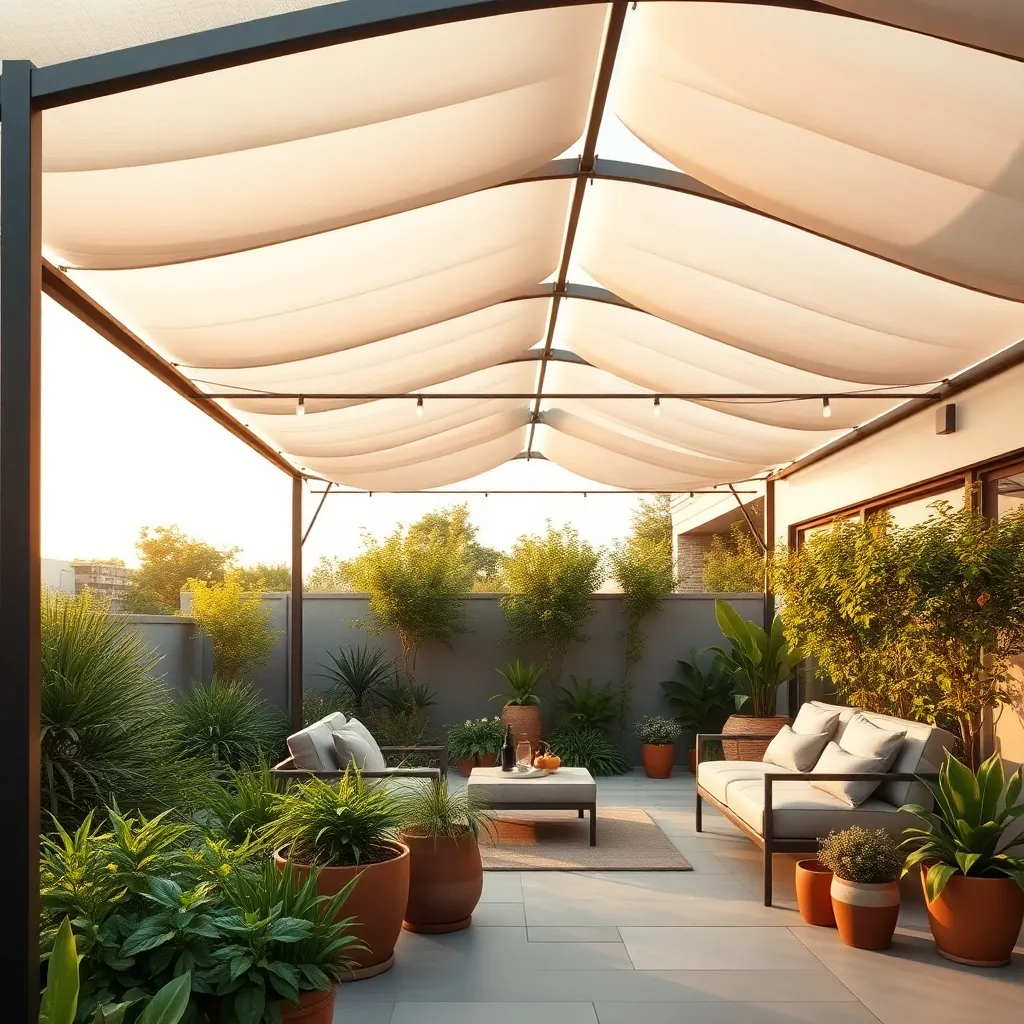
Using lightweight metal frames for your garden canopy offers a durable solution that is both practical and stylish. Aluminum and galvanized steel are excellent choices because they resist rust and require minimal maintenance. For beginners, consider starting with a pre-fabricated frame kit, which typically includes all necessary components and clear instructions. These kits often come in standard sizes, such as 10×10 feet, making them adaptable for various outdoor spaces.
For those looking to customize, advanced gardeners can explore designing a bespoke structure. Incorporate adjustable features like telescoping poles to adjust the canopy height according to seasonal needs or plant growth. Ensure that your metal frame is secured properly using concrete footings or heavy-duty ground anchors, especially in windy areas. Adding decorative elements such as climbing plants or hanging lights can further enhance the aesthetic appeal of your canopy, transforming it into a stunning focal point in your garden.
Opt for UV-Resistant Fabrics
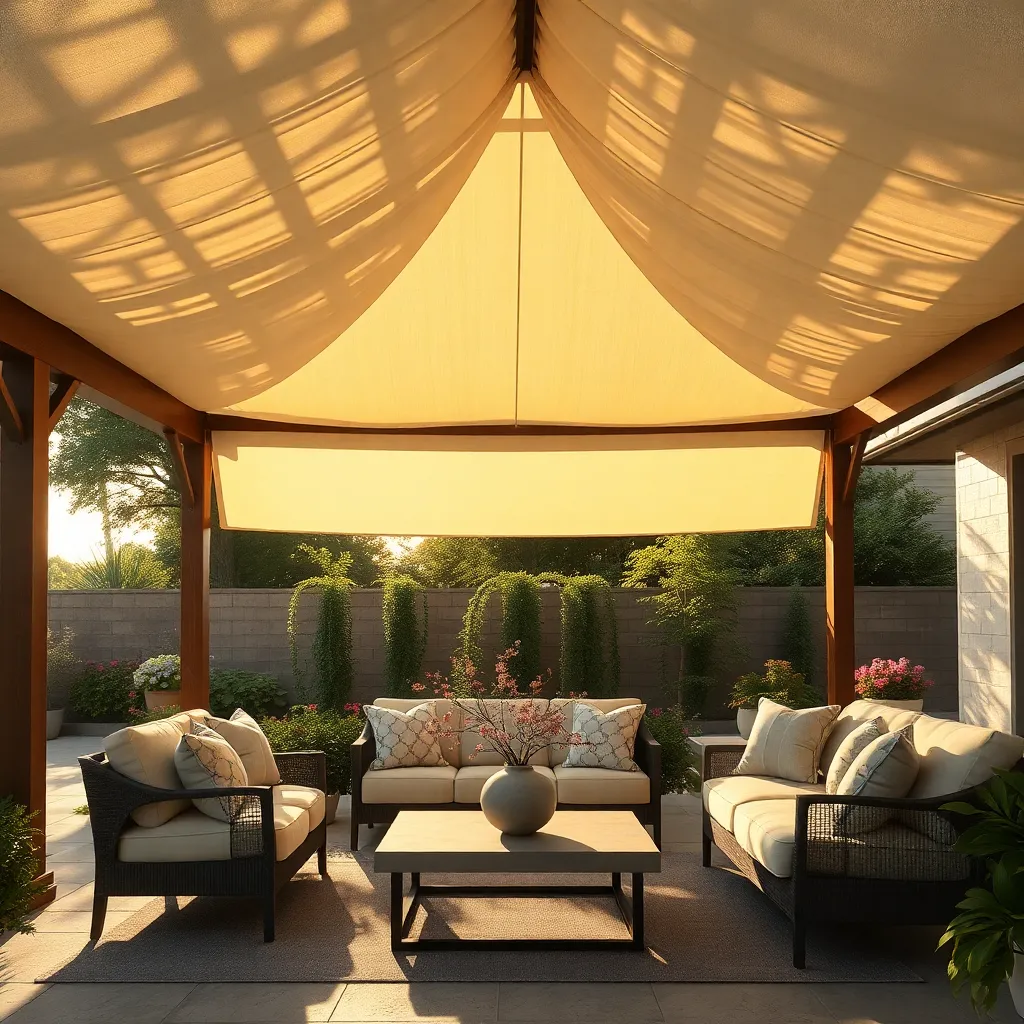
Choosing UV-resistant fabrics for your garden canopy is crucial to ensure durability and protect against the sun’s harsh rays. These fabrics not only help in extending the lifespan of your canopy but also provide effective shade and reduce fading over time. Look for materials like solution-dyed acrylics or polyester that offer high UV protection; they are known for their resistance to sunlight and weather conditions.
For added versatility, consider removable and washable covers which allow for easy maintenance and seasonal adjustments. If you’re more experienced, customizing your canopy with reinforced seams and grommets can enhance stability and performance. This approach is ideal for areas with variable weather, offering both protection and style to your outdoor space. With these materials, your garden will remain a comfortable and inviting retreat year-round.
Add Built-In Seating Options
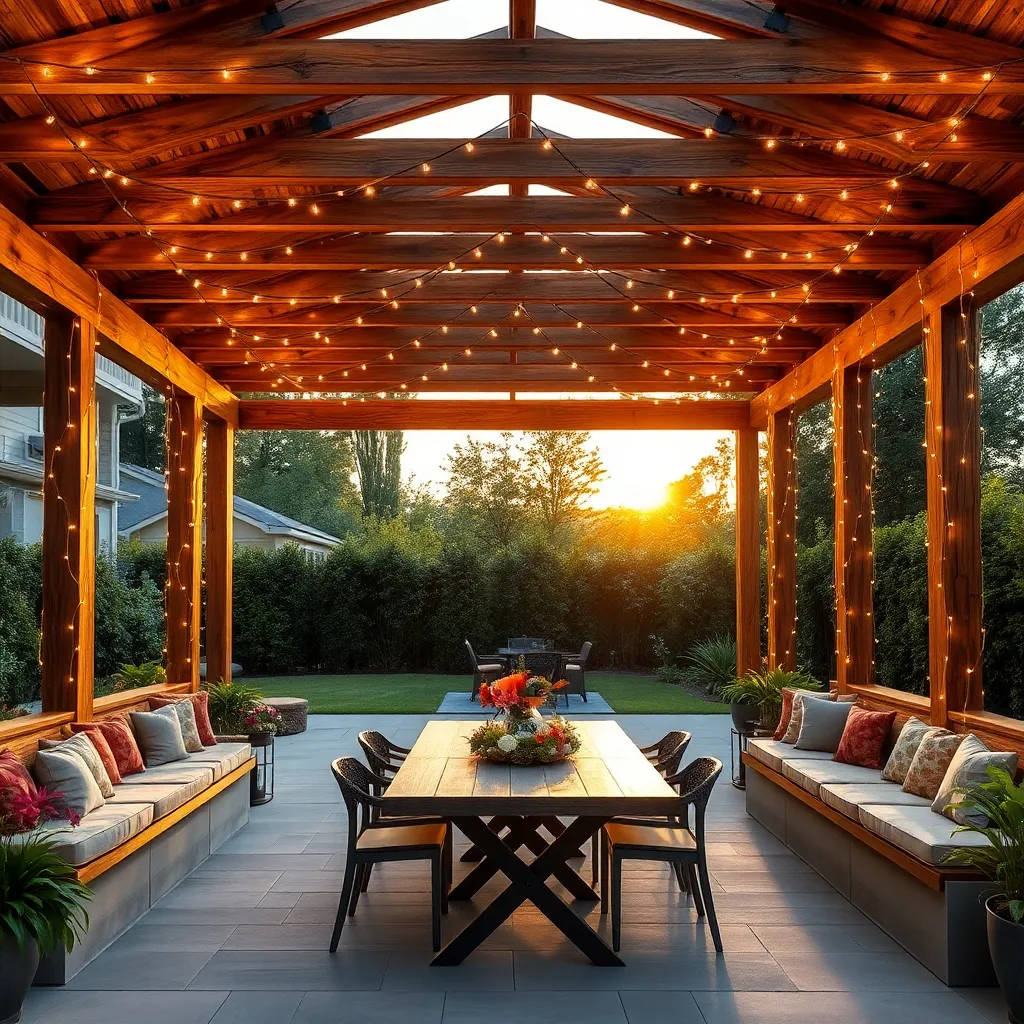
Creating built-in seating within your canopy design can drastically enhance the functionality and aesthetic appeal of your outdoor space. Start by considering weather-resistant materials like treated wood, composite decking, or even stone to ensure durability. Incorporate storage options beneath the seating to maximize space, offering a practical solution for stowing away cushions during inclement weather.
For a personalized touch, design the seating to match the style of your canopy—whether it’s modern, rustic, or traditional. Beginners can begin with simple bench designs, while experienced DIY enthusiasts might explore more complex configurations like L-shaped seating or curved arrangements. Ensure comfort with plush, UV-resistant cushions and consider adding side tables or ledges for convenience. This approach not only elevates the coziness of your canopy area but also encourages more time spent enjoying your garden retreat.
Integrate Solar-Powered Lighting
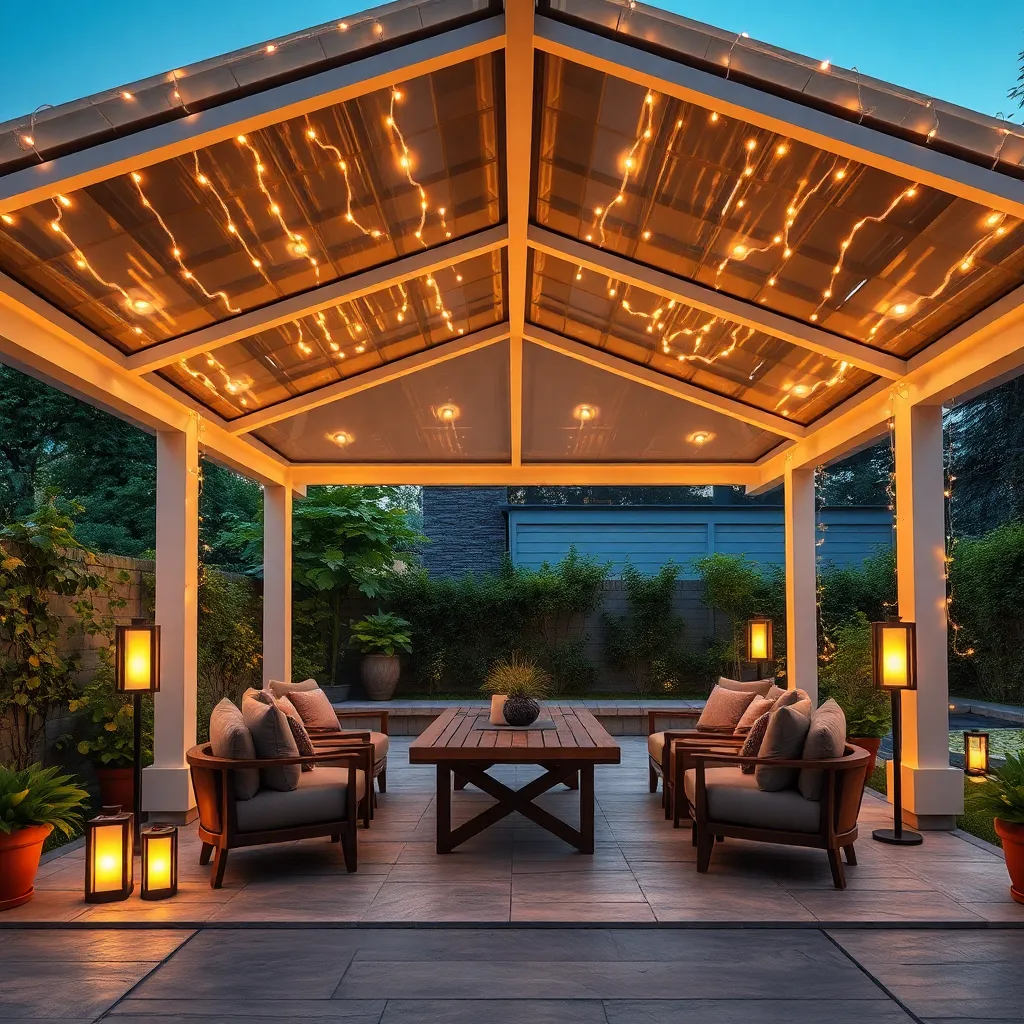
Integrating solar-powered lighting into your garden canopy design is a smart way to enhance ambiance while minimizing energy consumption. These lights are easy to install and require minimal maintenance, making them perfect for beginners. Simply affix solar panels to a sunny spot on your canopy, allowing them to charge during the day. In the evening, these energy-efficient lights will illuminate your space, creating a warm and inviting atmosphere. For a more personalized touch, consider using solar string lights or lanterns, which can be hung from canopy beams or wrapped around posts to highlight architectural features.
For those looking to add a sophisticated touch, explore options like solar-powered LED spotlights or recessed lighting. Spotlights can be strategically positioned to highlight specific garden areas or decorative elements, while recessed lights offer a sleek, unobtrusive look that’s ideal for modern canopy designs. When selecting lighting, opt for weather-resistant materials such as stainless steel or durable plastics to ensure longevity. Advanced gardeners might experiment with smart solar lights that can be controlled via a smartphone app, allowing you to adjust brightness and color to suit different occasions. By incorporating these elements, you not only enhance your garden’s functionality but also its aesthetic appeal.
Feature Transparent Roof Panels
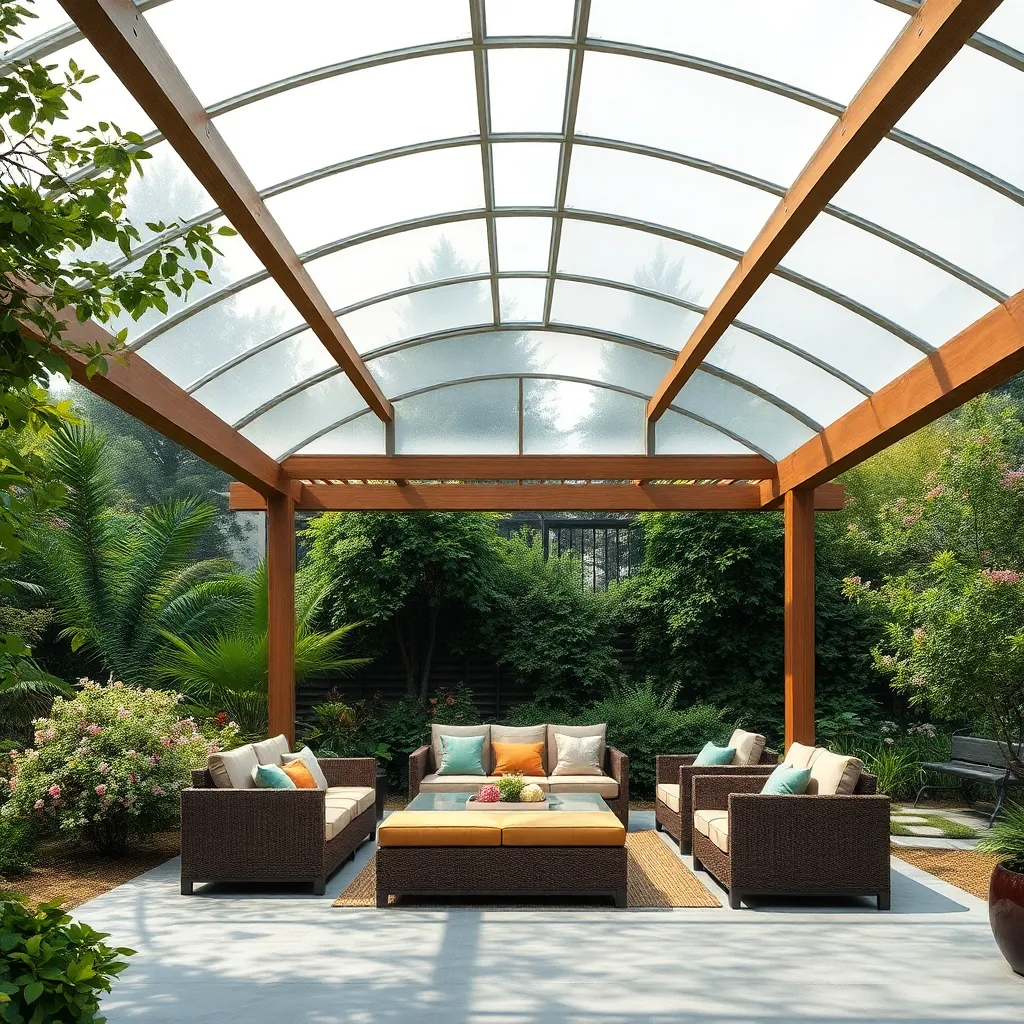
Adding transparent roof panels to your garden canopy is a great way to create an inviting, light-filled outdoor space. These panels allow sunlight to filter through, reducing the need for artificial lighting during the day while protecting you from the elements. For beginners, consider using polycarbonate panels, which are lightweight, durable, and simple to install. To enhance aesthetics, choose panels with UV protection to prevent fading and damage from the sun.
For those looking to elevate their canopy design, consider incorporating adjustable panels or a retractable system. This advanced option allows you to control the amount of sunlight entering your space, offering flexibility for different weather conditions. Ensure the framework can support the weight of the panels by using sturdy materials like treated wood or powder-coated aluminum. When planning the structure, aim for a gentle slope to facilitate water drainage, typically around 5 degrees. This practical approach will ensure your outdoor shelter remains both functional and visually appealing.
Design With Weatherproof Materials

When designing your garden canopy, choosing weatherproof materials is essential to ensure longevity and durability. Materials like treated wood, powder-coated steel, and high-quality outdoor fabric are excellent options. Treated wood provides a natural look while resisting rot and insect damage. Powder-coated steel offers robust support with added rust resistance. For a fabric canopy, opt for UV-protected, water-resistant textiles to withstand various weather conditions.
To enhance your canopy’s resilience, consider incorporating design elements such as sloped roofs for effective rainwater runoff. This can prevent water accumulation and potential damage. For those with advanced DIY skills, creating a metal frame with adjustable tension rods can offer additional stability during strong winds. Remember to anchor your structure securely into the ground, using concrete footings or heavy-duty stakes, to further protect it from harsh weather elements.
Incorporate Water Features for Cooling
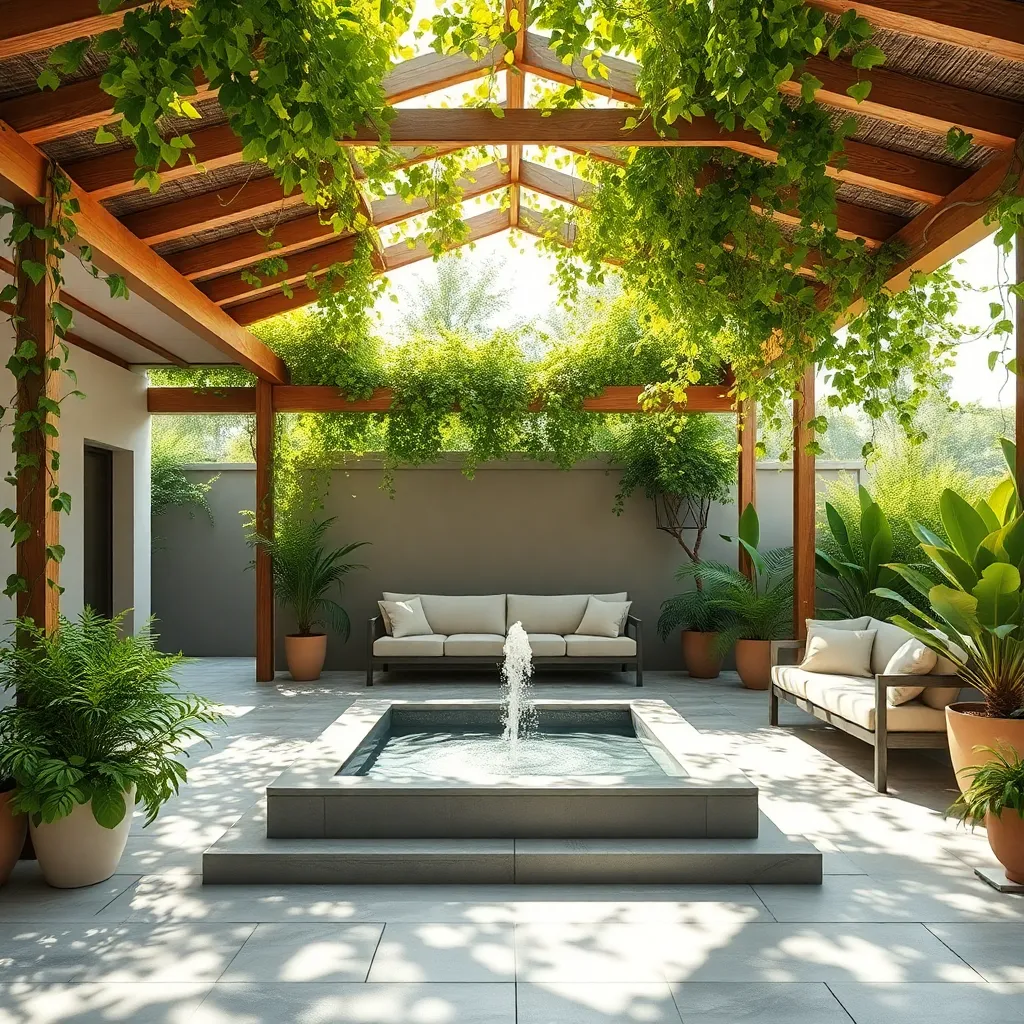
Incorporating water features into your garden canopy design can provide a natural cooling effect while enhancing the aesthetic appeal of your outdoor space. Consider adding a small fountain or pond near your canopy area to help lower the ambient temperature. Water features not only cool the air through evaporation, but also create a soothing auditory backdrop. For beginners, a ready-made water fountain kit is a simple option, while more advanced gardeners might explore custom-built ponds with integrated waterfalls.
To maximize the cooling benefits, position your water feature so that prevailing winds carry the cooler air towards your seating area. Materials like stone or ceramic for fountains are durable and complement the natural environment. Ensure your water source is easily accessible for maintenance, and consider adding aquatic plants like water lilies for additional shade and beauty. By incorporating these elements, you can create a refreshing retreat that enhances both comfort and tranquility in your garden.
Blend Vertical Gardens with Canopies
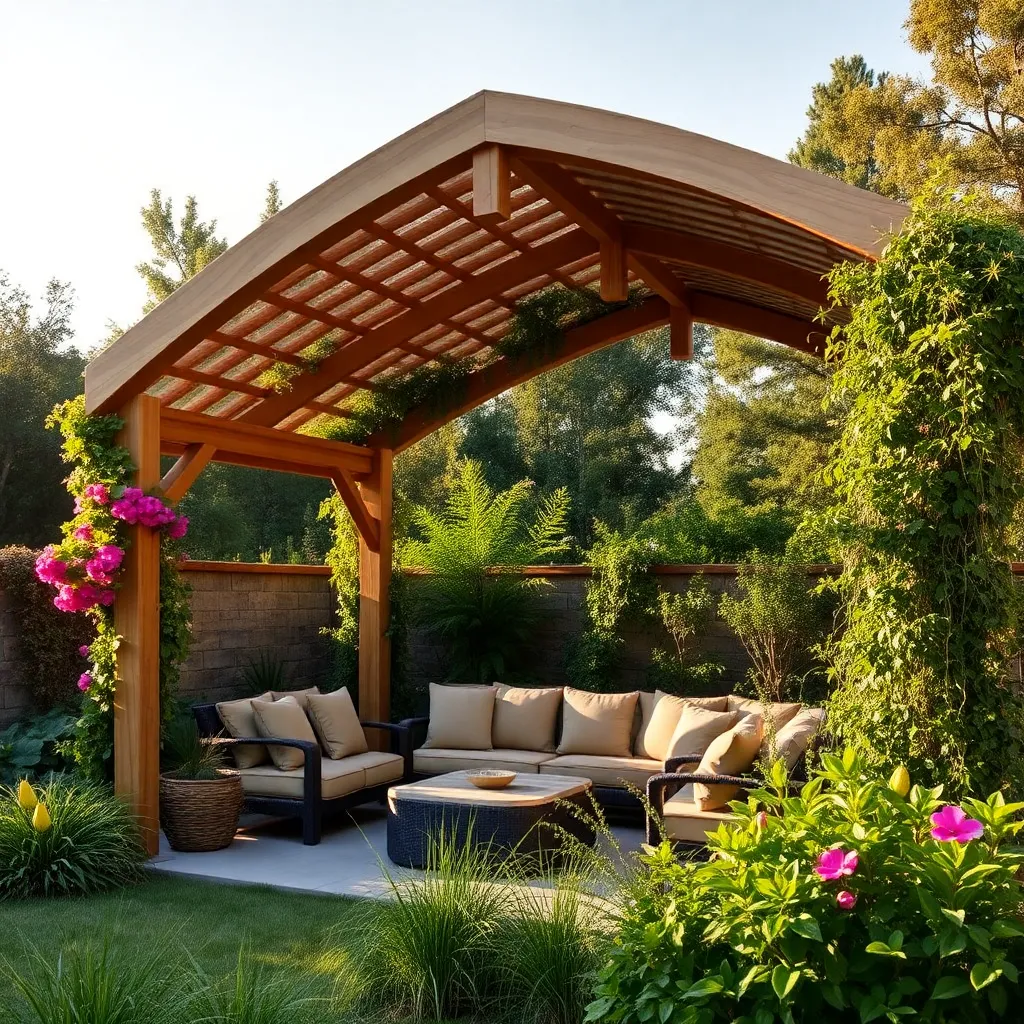
Integrating vertical gardens with your canopy structure can transform your outdoor space into a lush retreat. **Select durable materials** like reclaimed wood or metal trellises that can support plant growth while withstanding weather conditions. Attach these structures to your canopy’s posts or walls, and choose climbing plants such as **clematis, ivy, or jasmine** to add both beauty and natural shade. Beginners can start with **simple hanging planters** or pocket planters that are easy to maintain and can be rearranged to suit the changing seasons.
For a more advanced setup, consider installing a **drip irrigation system** to keep your vertical garden thriving with minimal effort. This system can run along the top of your canopy, ensuring even water distribution to all plants. **Incorporate a mix of flowering and evergreen plants** to maintain year-round interest and provide a habitat for pollinators. A strategically placed vertical garden not only enhances the aesthetic appeal of your canopy but also acts as a natural insulator, helping to regulate temperature beneath the shelter.
Conclusion: Creating Beautiful Outdoor Spaces
In exploring the ’12 Creative Canopy Design Ideas for Your Garden,’ we’ve uncovered a treasure trove of relationship-enhancing concepts—from embracing open communication and nurturing shared interests, to creating safe spaces for vulnerability and fostering growth through new experiences. Each canopy design symbolizes a unique aspect of a thriving relationship, offering a blend of beauty, shade, and protection that parallels the support and joy we find in our partnerships.
To get started, choose one idea that resonates most with your relationship goals and implement it this week. Whether it’s planning a cozy outdoor retreat to encourage deeper conversations or designing a space for shared hobbies, taking this step is crucial in nurturing your bond.
Remember, the success of any relationship lies in continuous growth and adaptation. Bookmark this article as your go-to guide for inspiration and as a reminder of the intentional steps you can take to enrich your partnership. With each creative endeavor, you’re laying the groundwork for a future filled with love and understanding. Keep these ideas close and watch your relationship bloom with renewed vitality and connection.

